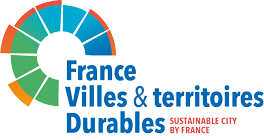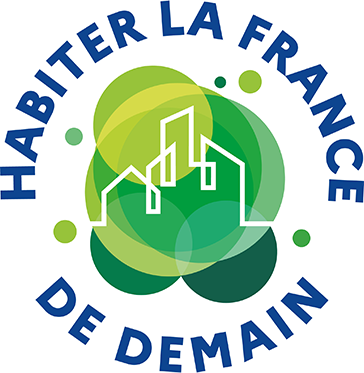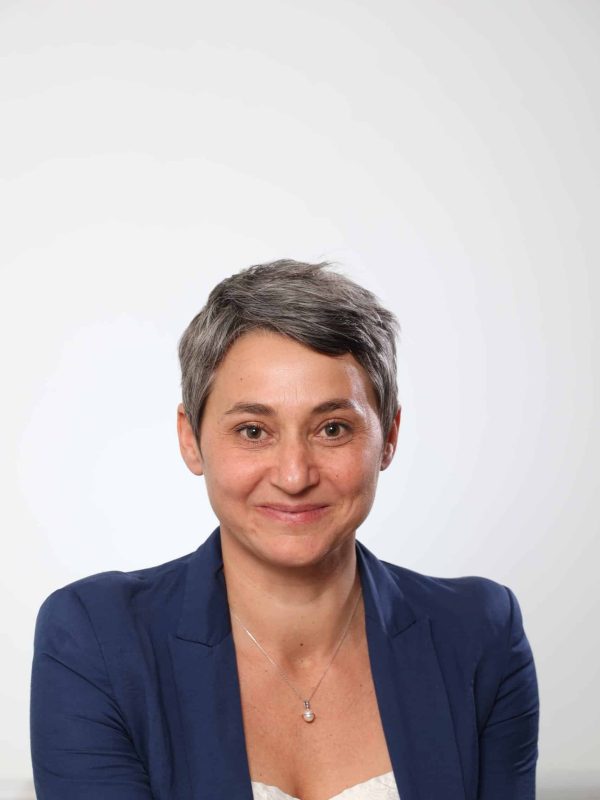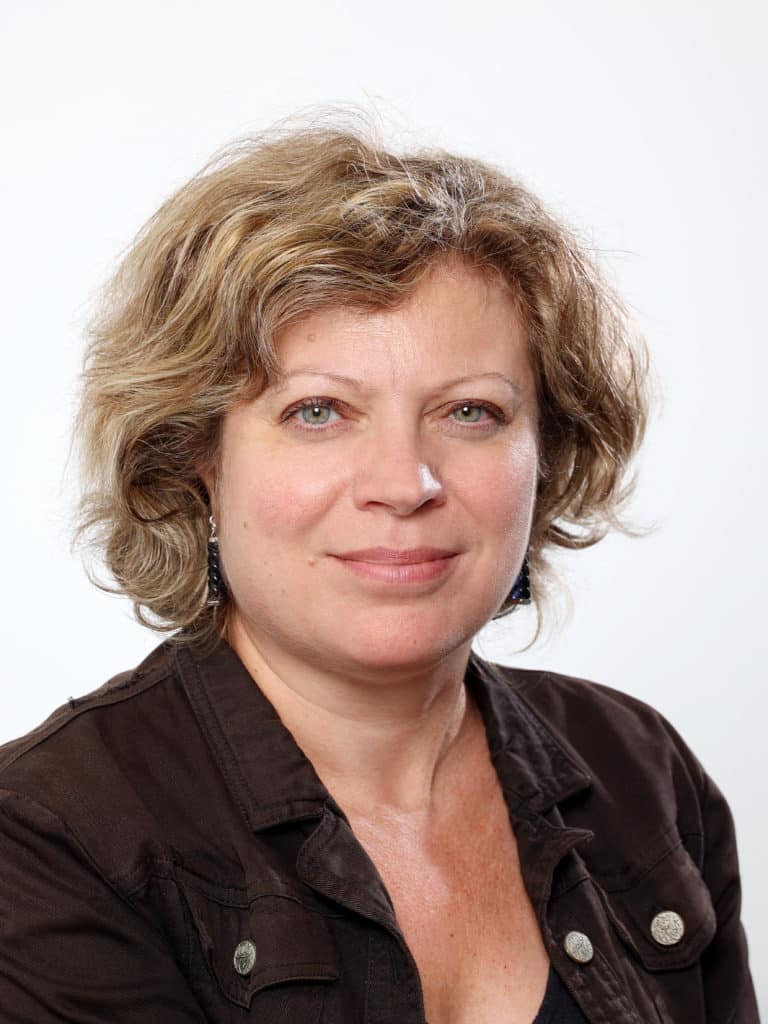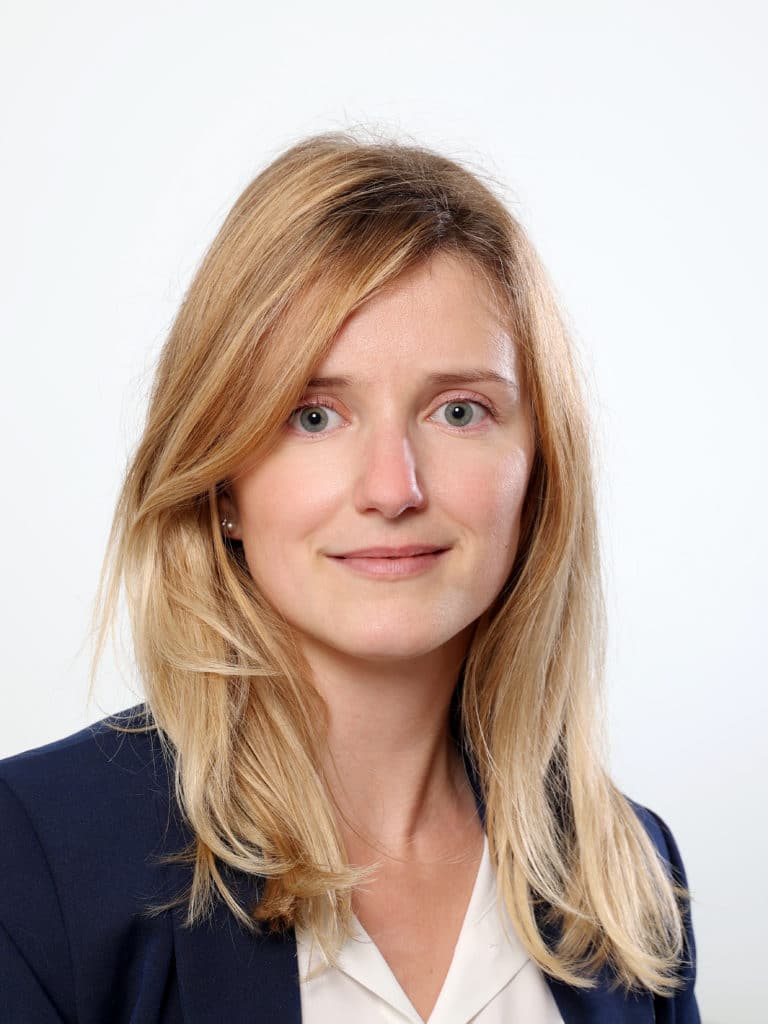“Cœur de Ville” Eco-neighbourhood, in La Possession
A project proposed by Construction 21

Contributor
estelle.techer@semader.fr
Description
Cœur de ville is an ambitious development operation that aims to provide the commune of La Possession with a new town centre, built in a long-term, sustainable and exemplary perspective, to better meet the increasing requirements of a growing population and to provide accommodation to over 5,000 new residents.
With this project, the commune of La Possession is seeking to assert itself as the sustainable city of the future on Reunion Island, through a development that meets high environmental, urban and territorial quality requirements.
One of the principles is to reconcile urbanity, social and functional diversity, as well as new modes of transport and new digital tools to share with the inhabitants a new way of living in the city.
The overall aim of this bold project is to carry out mass urbanisation in an insular and tropical context by favouring innovative solutions adapted to the environment to balance the city and its inhabitants...
- Construction
- Quality of housing
- Materials
- Operation
- Natural and aquatic environments, biodiversity
- Planning
- Economy of service functionality
- Transport of people
- Communication (digital)
- District
Factsheet
- > 20,000 < 100,000 inhabitants
Distinction
Project evaluation*
based on contributor declaration
Criterion 1: SUFFICIENCY
Yes, indeed the project takes into account the impact on land and biodiversity. In particular, the landscape project developed constitutes a genuine “resource territory”. The planted species made up of numerous endemic species, enable the reclamation of impoverished urban areas.
This plant diversity breathes new life into the soil through the development of complex root systems, which support the management of rainwater and encourage the installation of faunal biodiversity in the subsoil, soil and air. These endemic species have been selected for the tropical island environment of the semi-xerophilic zone capable of adapting to drought. In addition, the development of these spaces allows the junction between two ecological corridors, the Ravine of Lataniers and the Ravine at Marquet (ZNIEFF), thus creating an ecological continuity of the Green and Blue Framework. The project thus allows for the creation of a semi-xerophilic megatherium ecosystem within a new district extended by the ecological restoration of the Ravines.
Concerning the protection of water resources, the objective is to ensure qualitative and economical management, the planting systems installed in both public and private gardens are made up of xerophilic plants adapted to the dry climate of the site. The plants, which support the management of rainwater, benefit from this meagre supply and will also be economical in terms of watering. The project takes advantage of an existing raw water network to develop it in the public spaces.
The installation of a manually controlled watering system will reduce the overall consumption of this resource. A coupling with ground sensors is also envisaged to optimise its management using Smart City tools. The monitoring of consumption by means of a system will make it possible to quickly locate any leaks and educate users. On the other hand, rainwater is managed directly on site in an alternative way, by means of planted ditches, increasing the permeable surface, allowing natural water runoff and absorption, thus preventing the risk of flooding.
The project also aims to include the original agricultural identity of the site by setting up shared gardens in the heart of the block and the eventual deployment of an agro-urbanism project over an area of about 1 hectare.
There was a strong desire to maintain a high level of permeability (more than 50% on the entire site) by favouring open-ground planted areas in the heart of the block and in the public spaces, as well as favouring the use of porous materials for surface areas. Permeability ratios (50%) and open ground ratios (30%) are fixed for each operation.
The landscape approach of the project is certainly ambitious, through the preservation and enhancement of the existing plant heritage on the site on the one hand, and the reconstitution of a real biodiversity resource territory on the other. The plant heritage (endemic species and remarkable trees) has been identified in order to protect them within the framework of the urban planning (PLU) and to include them in the urban framework created.
In parallel with this in situ preservation, a real plant engineering was set up to create a matrix that is a source of indigenous biodiversity. The pedestrian mall of the Banians promenade is supported by a dense plant network and links the ecological corridors of the two ravines surrounding the site. Other pockets spread throughout the district complete this system: orchards, arboretum, specimen banyan trees, and urban agriculture.
In total, more than 80,000 plants will be planted, representing more than 100 different species, mainly indigenous and endemic. This plant diversity regenerates the soil through the development of complex root systems, supporting rainwater management and encouraging the installation of faunal biodiversity in the subsoil, soil and air.
The project completely shakes up the standards of urban development and construction systems to move towards environmental choices in terms of materials used.
For the urban and landscaping developments, the reuse of site materials is recommended (balance of excavation and embankment, reuse of rocks for the ditches and rubble structures, planted earth for the plantations, etc.)
Each construction project, in accordance with the construction and development regulations of the Concerted Development Zone, the “SD Reference Guide”, must be oriented towards the use of renewable materials and the saving of raw materials. In order to be authorised, constructions must favour products and components with a low grey energy content and in particular those made from organically sourced raw materials.
Indeed, the project also integrates the use of bio-sourced materials in the constructions, notably through the Sustainable Development reference system. This standard requires, for example, the use of at least 20dm3 of wood per m² floor area, allowing for carbon storage, but also the use of organically sourced and/or local materials, thus reducing the carbon footprint of the buildings.
A strong measure has been integrated into the regulations of the local urban plan (PLU in French), which is very voluntary in this respect, in particular article UA15, which sets a ceiling on energy consumption according to the purpose of the buildings (for example 20kWh/m² floor area/year for housing) and which imposes the instrumentalization of dwellings to monitor energy consumption.
Furthermore, with a view to overall improvement of energy and GHG balances, energy efficiency is translated into tropical bio-climatism on the scale of the site, the urban block, and the building, detailed in the reference systems and the development and programming guidelines. The objective of this efficiency is that no air-conditioning should be installed in the Concerted Development Zone (unless there is a clear and proven need), thanks to the design of the buildings and the structuring of the surrounding spaces into real “islands of coolness”.
In order to reach the objective of carbon neutrality and energy passivity, a global strategy has been implemented in the design of the urban grid. Regulatory prescriptions supplemented by a sustainable development reference framework with strong requirements provide a framework for all construction projects.
Overall in terms of the master plan, priority was given to an urban organisation of porosity in relation to the winds as well as to strongly vegetated urbanism to create fresh island.
At the individual building level, an advanced bioclimatic approach was developed for the envelope, its composition and solar protection, using only passive solutions.
In addition, for all tertiary buildings, a TEC-TEC study is required to carry out a pre-diagnosis of the carbon footprint of the project during construction and operation.
Finally, the shopping centre project (250 housing units, 13,000 m2 of offices and shops) is in the process of obtaining BREEAM (Building Research Establishment Environmental Assessment Method) certification and is developing a strategy of self-consumption with the installation of photovoltaic panels on all of the fifth façades.
From the design of the buildings, the aim is to limit the waste of materials by making reasonable, functional and easy to maintain architectural and technical choices.
In the same manner as with planted areas, differentiated and ecological management methods will encourage the regeneration of living soil and avoid harsh management methods that are resource-heavy, including fuel (blowers and thermal brush cutters).
Electricity and water consumption will be monitored using tools developed as part of the smart city project.
The energy efficiency requirements for the design will be included in a specific reference framework for the management and operation of the operations and the district as a whole.
The TEC-TEC tool will also be employed to reduce the carbon impact of tertiary building operation
Criterion 2: INCLUSION
Consultation plays an important role in the genesis and throughout the implementation of the project, with:
– Holding regular informative/thematic public meetings
Regular informative/thematic public meetings and quarterly participatory workshops
– Specific awareness-raising projects with targeted populations: schools, senior citizens, etc.
– Collective projects with the population: around the animation of shared gardens, the development of public spaces, the choice of new street names, etc.
– A process has also been initiated with the town centre’s shopkeepers, who are involved in the town’s dynamic commercial development, particularly through the implementation of an eco-shopkeeper charter
Implementation of an eco-citizens’ charter developed in partnership with residents and partners of the Coeur de Ville project.
– Development of participative workshops with volunteer residents through the “Kozman Ekokartié” so that residents can participate in the quality of life of the Coeur de Ville.
– Creation of photoshoots in order to integrate the inhabitants and make them actors of their district, but also to allow to feed the communication supports of Cœur de Ville.
-Implementation of shared gardens in the Cœur de Ville is the result of a participatory approach. For the first garden, there are 19 plots that allow the inhabitants of the “Coeur de Ville” to garden close to where they live. It also allows each inhabitant to be a player in his or her neighbourhood (exchange of know-how, communication between neighbours, getting together as a family to enjoy gardening for their own consumption and to eat healthily, etc.).
These gardeners will be eligible for support offered by the An Grèn Koulèr association and thematic gardening workshops (sowing, irrigation management, terrariums, the shared garden charter, composting, organic farming, etc.).
– The implementation of a charter for the shared gardens, co-constructed with the gardeners who have been allocated plots.
The implementation of a participatory and educational approach, through environmental awareness-raising activities for schoolchildren (elementary, secondary and high schools). In conjunction with the Council for Architecture, Town Planning and the Environment (CAUE in French), the youngest children are invited to project themselves into their future environment by asking them to contribute their vision of the city of tomorrow. This is an intergenerational approach that has been in place since the launch of Cœur de Ville. For example, the latest initiative will lead to installation of street furniture in the district, designed and developed by youngsters.
Social and functional diversity is part of the DNA of Cœur de Ville.
The project will therefore include 40% social rental housing, 20% intermediate housing and 40% free housing for each block and for the whole of the Concerted Development Zone. But also, more than 15,000 m2 of shops, offices and workshops, as well as 2 schools, a college and the new central town hall.
The project also includes 3 service residences for independent seniors, as well as 2 micro-care centres, for which permits are currently being processed. This program is the first step towards a mixed-use neighbourhood that will come to life thanks to important public spaces (central square, banyan tree promenade).
The establishment of shared gardens also allows residents to meet, regardless of their situation, in a place where they can share gardening. These places constitute high places of living together because they are a source of meeting and sharing for the inhabitants.
The project also promotes functional diversity, in particular through a multifunctional district that combines shops, housing, offices, public facilities, meeting and exchange spaces, and also local services.
Today, the 1st operational section has already been delivered:
– A grocery shop (Mon Petit Comptoir)
– A commercial agency of a mixed economy transport company (KAR’OUEST, urban and suburban passenger transport)
– A physiotherapist’s office
– A food shop selling whole or processed local poultry products (Q.UE V.OLAY P.e.ï)
– A centre for early medical and social action
The district will be home to the largest car park on the island: nearly 400 shared and connected spaces, with car-sharing and multi-modal transport (bicycles and scooters)
The eco-district is designed and built on the principle of short distances, within which we will make public services, work, consumption and entertainment areas easily and quickly accessible to all, and within which we will develop access to soft mobility for all: bike-sharing, a tropical pedestrian mall crossing the entire district, development of public transport, etc.
Because of the requirements and obligations of the mixed housing programming, the most modest households will be eligible to access 40% of constructed housing units.
Furthermore, the project has been developed in accordance with accessibility rules, so that almost the entire neighbourhood is accessible to people with reduced mobility. Even the shared gardens are adapted, making it possible to provide raised planters for PRMs. Also, as part of the support for children with disabilities, gardens are made available so that the children can garden and learn to cultivate. These gardens are made available to the early medical and social action centre. In addition, bioclimatic construction means that air conditioning is not used in homes so that the most vulnerable people are not exposed to the dangers of gases emitted by air conditioning. Attention is also paid to the elderly, as three residences will be created for senior citizens, offering personalised services and quality housing adapted to the elderly. This offer of residences will include 2 “Kaz’aïeuls” and a private structure, which are accommodations adapted to the needs of the more than 60 years old “active and autonomous” and receiving low pensions. These residences are based on 5 pillars “comfort, autonomy, tradition, security and solidarity”.
In order to get feedback from the users, workshops were set up. These workshops helped to understand the difficulties of the users, so the project becomes resilient and learns from its mistakes to improve. In fact, the perception of the territory is gradually improving, especially through communication. In addition, a thermal comfort study is underway in the dwellings to measure temperatures and understand the notion of discomfort in the dwellings and provide solutions.
In addition, resident surveys have been carried out to measure the quality of life of residents. This survey shows that the inhabitants are satisfied with and interested in their neighbourhood. In particular, 64% of the inhabitants are satisfied with the green spaces in the eco-district.
The eco-neighbourhood is a family neighbourhood, with almost 83% of residents surveyed having children. It is also a good place to live according to the residents, 72% of the families interviewed said that their accommodation was of good quality and 65% of those interviewed said that it was more comfortable on a daily basis.
Residents participate in the good life of the neighbourhood by gardening in the shared gardens. 75% of residents are aware of the principle of shared gardens, and 63% are ready to benefit from a plot in exchange for a small contribution.
The project takes into account energy conservation by installing sensors in the homes. This will enable better control of energy, particularly water and electricity consumption, and thus make savings. The installation of these sensors interests 73% of the residents questioned. The eco-district also integrates a desire to promote eco-actions such as sorting, and we note that for 94% of them sorting their waste is a daily gesture. However, progress is to be expected regarding composting, with 89% of residents saying they have never used a composter. Similarly, a change in habits and an evolution of practices must take place, with only 17% saying that they carpool, 20% using public transport, and 20% using bicycles in the neighbourhood. The inhabitants still have a little difficulty in changing their habits, they are not yet Eco-actors in the eco-district, however, the community’s will is to bring them towards these new practices in favour of their environment. Another point that needs to be improved is acoustics. For 63% of the families, the acoustic quality needs to be improved, either because of the noise linked to the residence or that of the neighbourhood (currently under construction).
Criterion 3: RESILIENCE
In terms of the vulnerability of populations to environmental risk, a diagnosis of the sector’s hydrological system and the consideration of areas at risk of flooding in two places on the site guided the design of the entire stormwater management project.
In order to anticipate the risks associated with the arrival of the population and the new attractiveness of the city centre, the project was included in an urban safety approach at a very early stage.
As far back as 2013, a study was conducted in collaboration with the national police force to anticipate risks of crime and public disturbances.
An in-depth study was also carried out on the district’s lighting, which had to be balanced between environmental and security concerns.
The choice of optimised lighting, adapted to the nature of the spaces and the time of night, plays a crucial role in the feeling of safety and security. The objective is to improve lighting while avoiding light pollution and energy waste.
Based on a sociological analysis of the area, the project aims to respond to the need for solidarity in the development of the local economy, in particular by means of integration contracts, the promotion of sectors, the creation of jobs, etc. During the works, 400 annual jobs are created or consolidated. As an example, the shopping centre project with all the offices, shops, and restaurants will generate nearly 1,000 direct and indirect jobs.
A dense and mixed program, with the creation of residences and services for the elderly, and social spaces allowing the establishment of an intergenerational social mix within the district. The expansion to the number of possible meeting places further supports this wish for social inclusion and is intended to reduce the vulnerability of isolated people.
A cross diagnosis underpinned the design of the project. In fact, various expert assessments were carried out (urban, environmental, mobility, sociological, economic, hydraulic, aeraulic, climatic, etc.) to arrive at both the urban programming and the development plan.
It is through this systemic approach that it is necessary to arbitrate between the different issues and objectives as the district is designed.
Criterion 4: CREATIVITY
In the context of the creation of the Concerted Development Zone (CDZ), the project promotes local jobs, thus enabling jobs to be created during each phase of the work. In conjunction with companies and job seekers, the CDZ creates work-study jobs through the development of a network of actors. The networking between the inhabitants and the Cœur de Ville project thus enables the development of employment opportunities induced by the work of the development operation.
As part of a partnership approach with the economic integration network, provisional hours of integration are included in the works contracts, with priority given to applicants living in the Cœur de Ville. For phase 1, nearly 4,204 hours were carried out from a forecast of 4,336 hours, i.e. 4 people employed. For tranche 2, the results for the road and other networks contract (lot 1 – tranche 2) in 2020 show that 2,547.50 hours were recorded out of a forecast of 1,625 hours. This means that one person was employed as a road and network (VRD in French) operator and one as a VRD mason. These two beneficiaries will continue on contract with the company holding the VRD contract. Similarly, 442 hours of integration are planned for the furniture lot (lot 4 – tranche 2) and 755 hours for the urban paving lot (lot 5 – tranche 2).
In addition, numerous associations are present on site, both in the shared gardens, creating a link with the gardeners and providing them with training and activities, and in the Residential Common Premises. The latter creates links between the inhabitants through cultural or manual activities. (Associations: AGK, You are my other, Enjoy life…).
The project tries, through different actions, to allow the inhabitants to become the actors of their neighbourhood. Through a biodiversity mission, the project tries to allow the inhabitants to better understand the ecological functioning of their neighbourhood, but also to learn how to protect and manage it. This social innovation is linked to the services of the city of La Possession, thus allowing the consolidation of the governance of the project. The governance of the project is ensured in a tripartite way thanks to a public/private partnership.
The project has mobilised technical innovations, notably through the development of the Smart City association.
Indeed, through the Smart City, technological innovations will be proposed to the inhabitants, thus allowing more services of comfort and exchanges. Thus, the connected city improves the quality of life for everyone by putting the human being and the citizen at the heart of everything.
Among the technological innovations we have:
- Shared connected gardens: By means of a smartphone and a dedicated application, it will be possible to streamline management. The app will allow users to reserve plots, lead discussions, seek information concerning activities and training, sell fruit and veg and encourage direct-to-client sales.
- Weather sensors: Thanks to a weather station and sensors installed in the street, users will be able to obtain the temperature, air quality and humidity.
- Energy monitoring sensors: Smart water and electricity meters will allow users to monitor their electricity and water consumption in their homes. This will allow users to save money by accurately monitoring their consumption.
- Online shopping: Through the development of platforms bringing together all local shops, it will be possible to place orders or make home deliveries. (“E-commerce”, “e-Kanopée” and “e-conciergerie” projects)
- A digital platform: A digital platform will centralise all private (electricity/water consumption) and public (bus timetables, school enrolment, etc.) data for all residents and users of the city. All the services offered to residents will also be available on this application, in particular car-sharing, buying tickets for shows online, looking for childcare, cleaning, etc.
- Intelligent car parks: Thanks to an application that will indicate the available spaces in real time in the underground car park and the surface car park, it will be easier for users to park.
- Participatory applications: Using a participatory application called “Communecter”, residents will be offered the possibility of being informed about the city and all the activities on offer, as well as participating in the life of the city.
Criterion 5: POTENTIAL OF REPLICABILITY
The CDZ Cœur de Ville is the first project to be launched within the “Ecocité” perimeter. As such, it is intended to serve as an urban laboratory in order to test ambitious development and urban planning methods in terms of sustainable development issues, social and functional diversity and the inclusion of inhabitants.
The project is entirely replicable elsewhere, even outside the “Ecocité” perimeter, provided that it is adapted to the environment concerned. Indeed, the concept of the Coeur de ville eco-district of La Possession can be replicated everywhere else, but not as a whole because the project is specifically designed to be undertaken within its own territory.
Moreover, the CDZ can be a model for certain themes, especially in relation to the eco-district label in tropical environments. However, these themes can of course be replicated in other environments. To do so, the Sustainable Development reference framework can be the basic document for any reflection, a document that is accessible online on the project website, or on the website of the City of La Possession.
